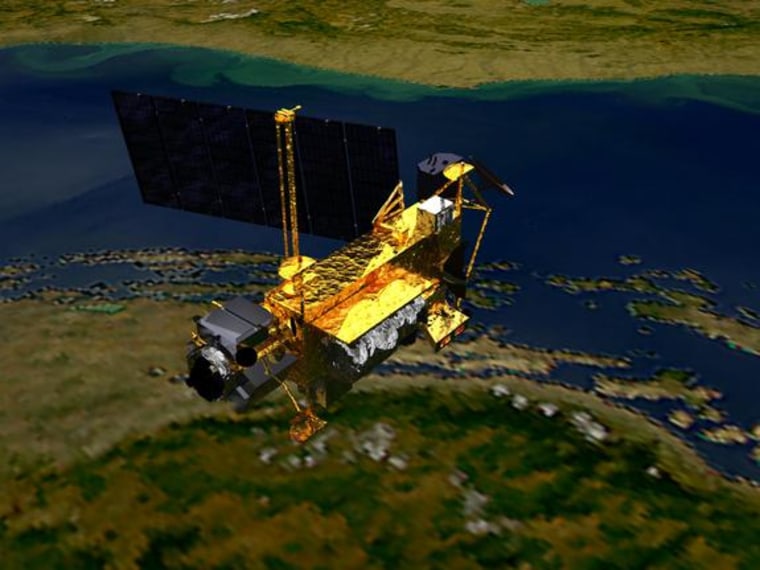When NASA's Upper Atmosphere Research Satellite descends from orbit, will we see it coming? Veteran French astrophotographer Thierry Legault has already seen it, using a 14-inch telescope. The ghostly video clip above shows the UARS satellite tumbling at an altitude of 155 miles (250 kilometers) on Sept. 15.
Legault teamed up with Emmanuel Reitsch to create the clip, using imagery from a Lumenera Skynyx L2-2 camera mounted on a Celestron EdgeHD 14-inch Schmidt Cassegrain telescope on an automated tracking system. When he includes the angle of observation, Legault figures that he got the shot from a distance of 200 miles (316 kilometers). The action in the clip has been sped up by a factor of two, compared with real time.
Here's an artist's conception of the satellite in orbit that may give you a better sense of what you're seeing in the video:

The UARS satellite has been out of commission since 2005, and its orbit has been decaying since then. Two weeks ago, NASA alerted the world that the satellite's atmospheric re-entry was imminent. Today's forecast has the satellite making a fiery final fall on Friday, plus or minus one day. An estimated two dozen pieces of debris, including a roughly 300-pound (150-kilogram) chunk, could rain down anywhere in latitude between northern Canada and the tip of South America. NASA can't be more precise than that right now because there's no way to control the satellite's descent.
That makes the situation sound a bit scarier than it really is: Because our planet has so many empty expanses of land and sea, NASA's orbital debris experts say there's just a 1-in-3,200 chance that any of the debris will hit anybody. That translates to a 1-in-21 trillion chance that any one particular person (you, for instance) would be struck. As it gets closer to re-entry time, NASA expects that the predictions for the debris zone will get more precise.
For updates, check NASA's UARS status page and our Space News section. Today's story focuses on how prepared the Federal Emergency Management Agency is in case the satellite re-enters over U.S. territory. Feel free to discuss the satellite's imminent fall in the comment section below — but whatever you do, DON'T PANIC!
More wonders from Thierry Legault:
- Last looks at the shuttle in orbit
- Spaceships get their day in the sun
- Sun gets double-crossed
- Still more from Legault's website
Connect with the Cosmic Log community by "liking" the log's Facebook page, following @b0yle on Twitter or adding me to your Google+ circle. You can also check out "The Case for Pluto," my book about the controversial dwarf planet and the search for other worlds.
